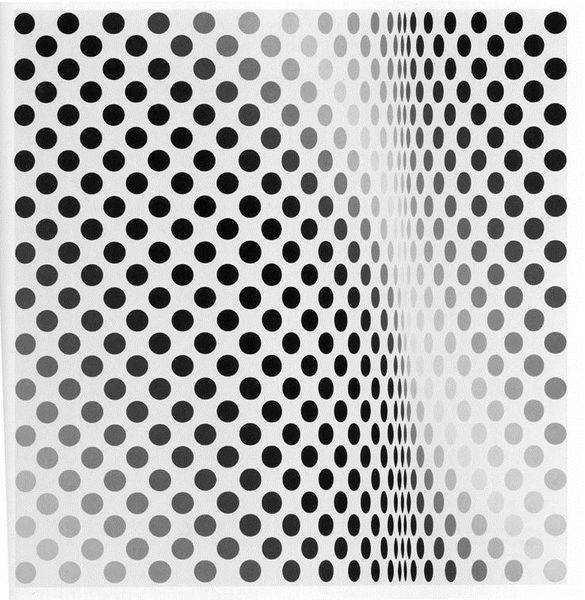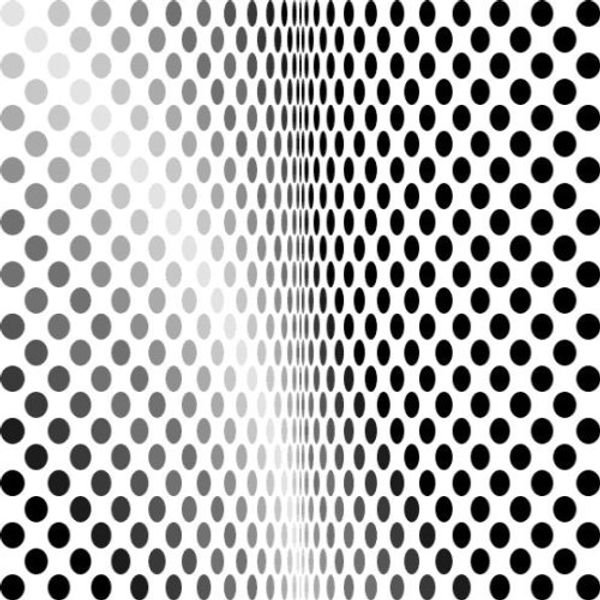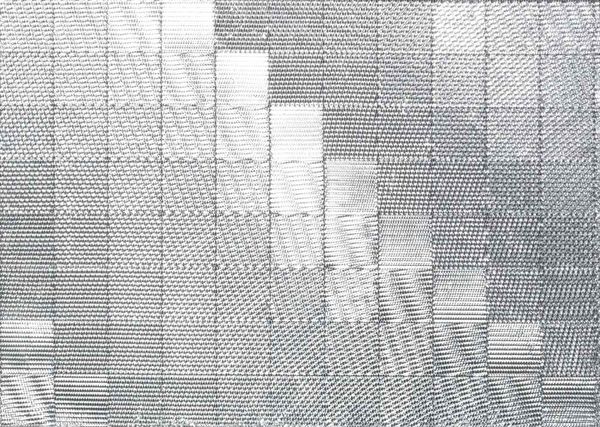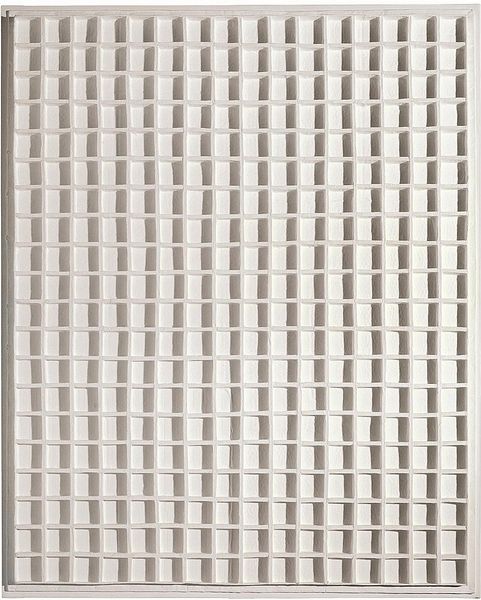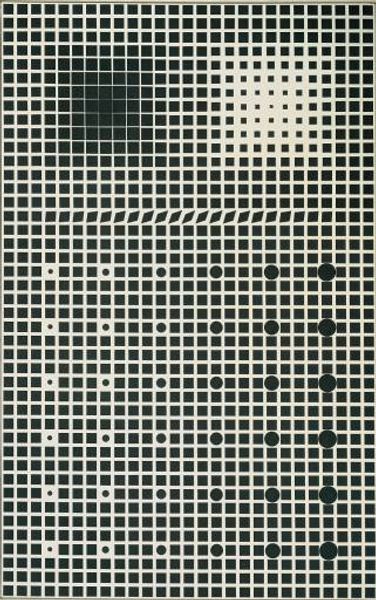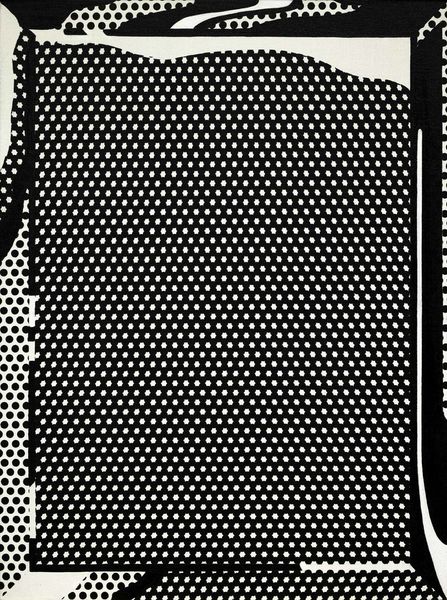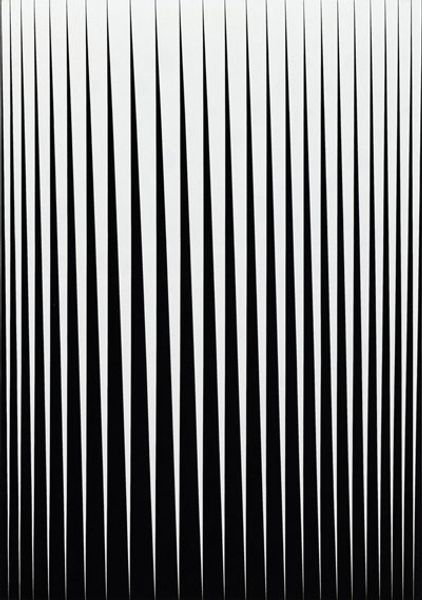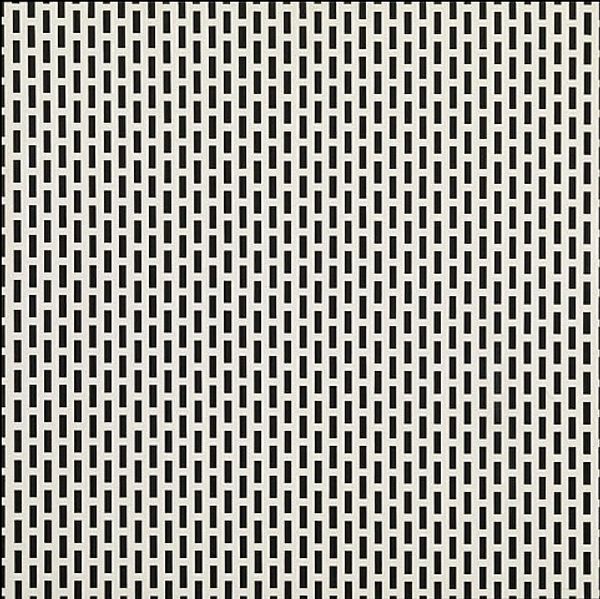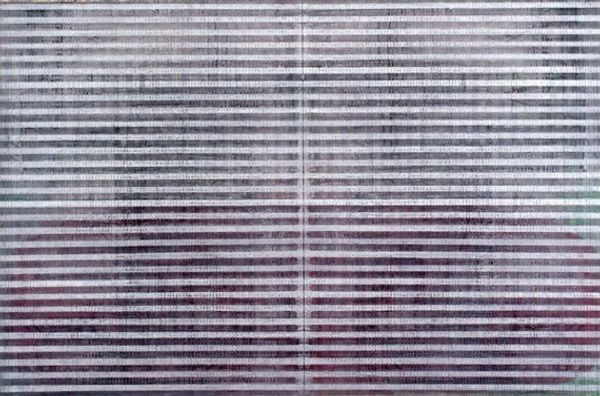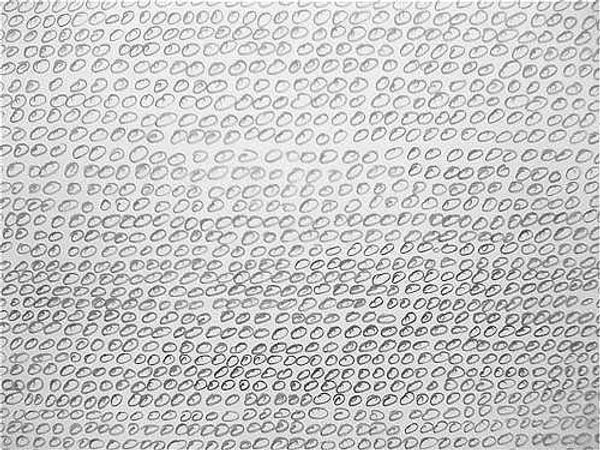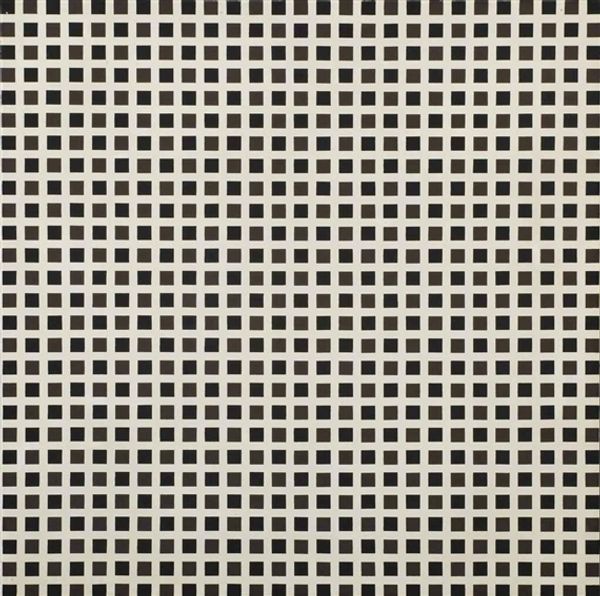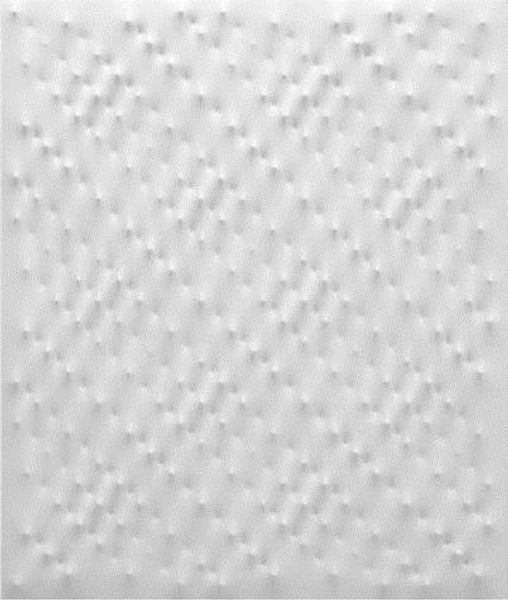
#
random pattern
#
non-objective-art
#
conceptual-art
#
minimalism
#
pattern
#
geometric pattern
#
abstract pattern
#
minimal pattern
#
linear pattern
#
geometric
#
simple pattern
#
vertical pattern
#
line
#
pattern repetition
#
layered pattern
#
sweeping and geometric line
Copyright: Francois Morellet,Fair Use
Curator: "4 trames de tirets pivotées sur un côté," created in 1971 by Francois Morellet, strikes me immediately as…controlled. The repetition is almost hypnotic. What are your initial impressions? Editor: The overwhelming sense is order, almost to a fault. It's intriguing, certainly, in its relentless pattern, but I'm immediately drawn to think about what was happening socially at the time. How does this reflect the zeitgeist? Curator: The late 60s and early 70s saw significant questioning of established norms. Artists like Morellet were, in a sense, dismantling visual traditions. The title itself, translated roughly as “4 Frames of Dashes Pivoting on One Side,” hints at a methodical deconstruction of form. What is it subverting? Editor: Perhaps the traditional role of the artist's hand. The seeming lack of subjective expression in this piece is palpable. Instead, we are offered a system, a rule-based procedure. I see this as relevant to broader challenges against existing social hierarchies and calls for a more systematized view of structures of control. But could also be that his work rejects traditional models? Curator: Precisely. The artwork embraces, to a certain extent, an anti-expressive stance, reflecting broader post-structuralist and feminist critiques that questioned the notion of the singular artistic genius. Morellet seemingly diminishes artistic presence by creating an objective and impersonal approach. Editor: Which raises questions of intentionality. What about race, class, gender are implicated within the "impersonal"? How might one begin to tease that out? Curator: Considering that during this time institutional structures were becoming critically evaluated, his approach seems an appropriate commentary. The minimalist language could also reflect social structures: reductive forms for critiquing structural inequalities of race, class and gender. Editor: Right, almost like a self-critique of institutional design principles… What a statement! After looking at Morellet's methodical pattern, the potential to dissect art as an artifact of these complex times becomes a fascinating study in history itself.
Comments
No comments
Be the first to comment and join the conversation on the ultimate creative platform.
